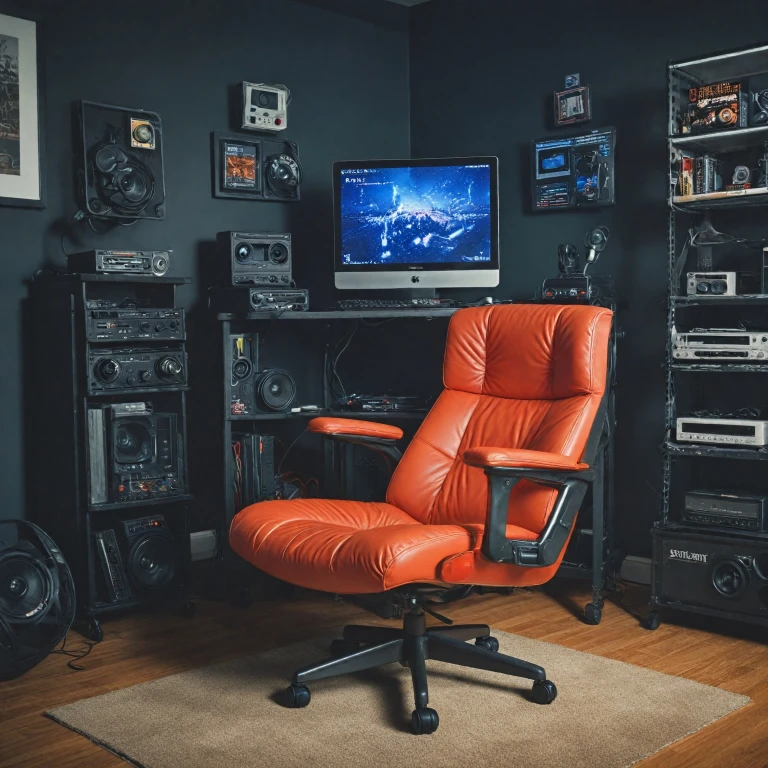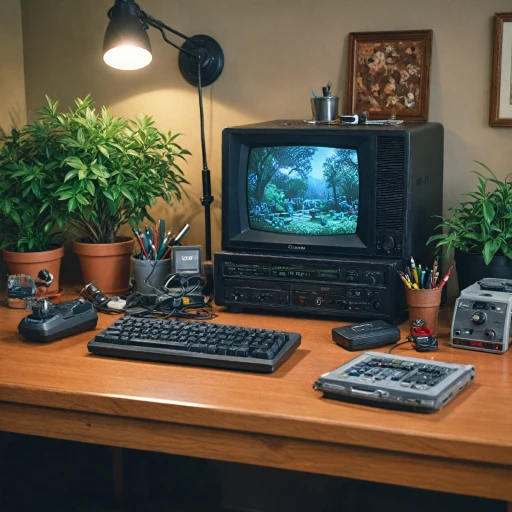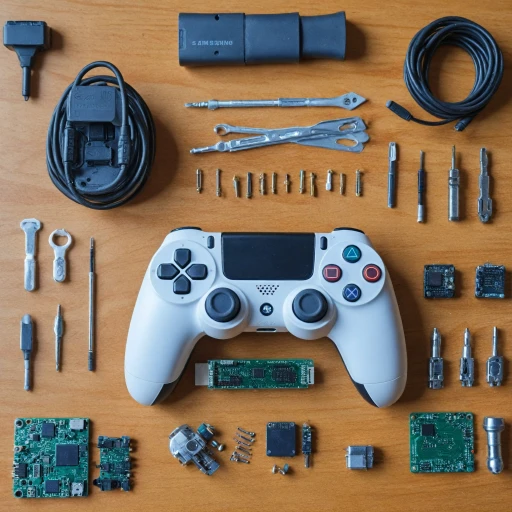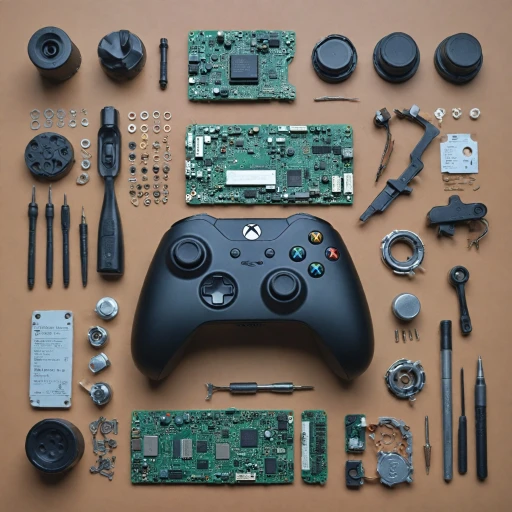
Understanding the OSSC Upscaler
Discover the Potential of the OSSC Upscaler
The OSSC Upscaler, also known as the Open Source Scan Converter, is an ingenious device designed to enhance the gaming experience by transforming low-resolution video signals from older gaming consoles into crisp, high-definition output. Unlike typical video scalers, the OSSC uses a cutting-edge scan converter to directly convert analog inputs into HDMI output, maintaining the fidelity and essence of the original video game graphics. For enthusiasts of vintage consoles such as the Atari or PSX games, the OSSC is particularly attractive. It connects seamlessly using RGB, SCART, or composite video cables, keeping the video and audio quality pristine. This device preserves the aesthetics and charm of retro games while offering a clear and vibrant display on modern displays. The OSSC offers multiple video mode options, allowing for precise adjustment of the aspect ratio and resolution mode to suit different types of displays and personal preferences. The available modes also help in addressing issues like input lag, which is crucial for high-paced gaming sessions. Beyond its functionality, the OSSC is distinguished by its open source design, allowing enthusiasts to customize settings. The remote control ensures easy navigation through its various features, enhancing user experience without any hassle. Additionally, the OSSC stands out among other options, like the RetroTINK, due to its ability to handle a multitude of input options including VGA and SCART cables. The potential it brings to the gaming world, particularly for those looking to relive their childhood games in HD, can't be understated. Even the OSSC Pro model provides enhanced features to meet the needs of the most technical users. For anyone who loves video games, the OSSC holds the promise of not only preserving but revitalizing gaming experiences across generations. As the gaming world leans into the future with innovations like the haptic suit, the OSSC reminds us that revisiting the past can be just as thrilling. premium linkWhy Use an OSSC Upscaler with Your Gaming Console?
Why Consider an Upscaler for Your Console?
With the rising interest in retro gaming, the OSSC upscaler brings the classic charm of older video game consoles to modern displays. The upscaler provides a cleaner, sharper picture by converting the analog signals of retro consoles into a digital format, making it an essential tool for enthusiasts who have collections of vintage Atari and game boy games.
Unlike conventional video scaling options like the retrotink, the OSSC retains the original image quality by processing inputs in real time. It does not compress or degrade picture quality, ensuring minimal input lag and offering customizable resolutions, making it particularly appealing when playing PSX games and other systems reliant on precise timing.
Another benefit lies in the OSSC's versatility. With support for different input and output options, including SCART, VGA, and HDMI, players can adjust settings such as aspect ratio and visual mode to their preference. The OSSC Pro expands these capabilities further, offering advanced features that cater to the needs of any retro gamer aiming for a tailored gaming experience.
Your gaming setup can reach new heights with the OSSC upscaler. Explore some exciting developments related to ongoing advancements and adapt your hardware to ensure that you experience classic games in their best light possible.
Setting Up Your OSSC Upscaler
Streamlining Your Setup for Optimal Performance
Setting up your OSSC Upscaler might seem daunting, especially if you're new to these devices, but with a little guidance, it can transform your retro gaming experience. First, ensure you have the right connections. You'll need cables such as SCART, VGA, or component cables depending on your specific console—be it an Atari, Game Boy, or any modern consoles. The OSSC Pro version might offer more enhanced capabilities suited for various setups. Begin by connecting the SCART cable or the appropriate adapter to the video output of your console. Plug the other end into the OSSC’s input slot. If you're using a VGA input, ensure you have the corresponding connectors ready. Next, connect an HDMI cable from the OSSC to your display output. This connection is critical as it enables your TV or monitor to display the upscaled video in res mode. The beauty of the OSSC is that it does this conversion while minimizing input lag and ensuring the best pixel mode quality. Don't forget to connect the audio output if required. Many consoles will transmit audio through the SCART cable, but if yours does not, ensure you have connected the audio cables accordingly. For modern consoles or games like PSX games, make sure to select the appropriate mode that matches the console’s settings, as the OSSC can handle varying sync options and video qualities. Once your physical connections are in place, you'll need to configure the OSSC's settings with the remote control provided. This will allow you to choose the mode selected, adjusting specific parameters like the aspect ratio or shadow mask configuration. Some options might require tapping into the open source community for advice on the best settings tailored to your video game collection. In case of any setup issues, cross-reference common problems with the included OSSC documentation. Many owners prefer to join posts in online forums where other users have shared troubleshooting tips. If you encounter persistent issues, consider checking our comprehensive guide on fixing your game controller which includes insight into aligning hardware properly. With these steps, your retro and modern games will look and perform significantly better, allowing you to relive those cherished gaming moments with enhanced clarity and vibrancy.Comparing OSSC Upscaler to Other Video Scaling Options
Evaluating OSSC Against Other Scaling Technologies
When delving into video scaling solutions for retro gaming consoles, the OSSC stands as a prominent option. However, it's essential to compare it with other alternatives on the market to determine which one best suits your gaming needs.- Image Quality and Latency: OSSC's line doubling feature, often referred to as the res mode, ensures crisp image enhancements, especially when paired with RGB inputs. Its minimal input lag due to the absence of a frame buffer sets it apart from other scan converters. For gamers using HDMI output, OSSC ensures near-original game aesthetics without the latency issues typical in composite video scaling.
- Compatibility and Inputs: The OSSC is known for its adaptability, supporting various inputs like SCART, VGA, and component cables. This positions it as a suitable choice for multiple consoles, from the beloved PSX games to classic Atari systems. The VGA input allows users to utilize a broader range of display modes compared to some other brands. Notably, OSSC Pro's recent innovations further enhance compatibility, adding more robustness to the device.
- Ease of Use and Features: While some users appreciate the OSSC's open-source nature, which allows for custom tweaks, others might find the Retrotink more user-friendly due to its plug-and-play nature. The remote control included with the OSSC aids in easy mode selection, offering varied options like shadow mask emulation.
- Audio Handling: Unlike some converters, the OSSC does an impressive job synchronizing audio with video, ensuring your gaming experience remains immersive. The audio output is as crucial as video output for games reliant on sound cues.
- Price and Assembly: While pre-assembled versions of the OSSC can be a bit pricier, they save you the hassle of putting together the unit yourself, which can be a consideration if you're not technically inclined.
Troubleshooting Common OSSC Upscaler Issues
Overcoming Common Hurdles with OSSC Upscaler
When diving into the world of OSSC upscalers, encountering a few stumbling blocks is not uncommon. Although the open-source scan converter is a powerful tool for enhancing video game visuals, some users face issues along the way. Here's a rundown of some frequent problems and practical solutions to get your OSSC setup running smoothly.
- Output and Input Mismatch:
This problem often arises when the mode selected on your OSSC doesn't match the expected resolution mode of your monitor or TV. Double-check that the video output settings align with your display’s capabilities. Scanning through different res modes might be the key to solving this.
- Sync Issues:
Sync issues can be pesky, causing your picture to flicker or disappear altogether. Ensure that your connections are snug and try different cables, such as a high-quality scart cable or vga input, to see if it resolves the issue. Your OSSC’s settings might need a tweak to stabilize the sync, particularly with older consoles like the Atari or when connecting consoles through composite video.
- Audio Problems:
Audio dropping or distortion is another frequent grievance. Inspect the audio output configurations on your OSSC. If you’re using the OSSC pro model, ensure that all connections are secure, and audio settings are appropriately configured. Sometimes, switching between input modes can also help rectify the issue.
- HDMI Compatibility:
Ensure that the connected devices are compatible with the OSSC’s hdmi signal. Some modern TVs can be finicky with older sync standards. Consider using a converter to bridge the gap and smooth over any input lag issues.
- Remote Control and Interface Navigation:
The OSSC’s remote control is essential for navigation, but it can sometimes be unresponsive if not aligned properly with the receiver. Check the battery and line of sight, and ensure the OSSC is not obscured by obstacles.
By troubleshooting these common issues with your OSSC, you can unlock a superior gaming experience akin to modern standards. Whether enjoying the nostalgia of your favorite psx games or resurrecting beloved titles on a game boy, the OSSC has the power to bring these games to life with vibrant color and clarity. Remember, patience and a bit of tweaking will go a long way in ensuring your gaming memories remain crystal clear.
Maximizing Your Gaming Experience with the OSSC Upscaler
Amplifying Your Gaming with the Right Settings
To truly elevate your gaming experience using the OSSC upscaler, it’s crucial to fine-tune the settings. Given the variety of input and output options, you can customize your setup:
- Input and Output Precision: Utilize RGB and SCART cables for enhanced video and audio clarity. Adjust the hdmi output to match your display's aspect ratio for reduced borders or clipping.
- Picture Quality: You may adjust the settings to minimize input lag. The OSSC employs advanced technology to ensure seamless video game transitions, helpful with retro consoles like Atari or the game boy.
- Sync and Color Settings: Using the remote control, navigate settings to enhance the color balance and synchronization with scan converter capabilities.
Customizing for Different Consoles
The OSSC shines when paired with a variety of consoles, especially when utilizing vga input or composite video connections. Customize according to the console in use:
- For Retro Consoles: Adjust the settings to the mode pixel and sync options that best display games from classic consoles.
- PSX and Similar Consoles: Adjust settings for your psx games, optimizing for the specifics of these classic game formats using the OSSC’s flexible res mode.
Advanced Options for Enhanced Gameplay
Ensure your setup is always running smoothly:
- OSSC Pro Functions: The enhanced ossc pro model provides additional options for video refinement.
- Open Source Benefits: Access to open source updates and community support can introduce new features or fix recurring issues.
- Alternative Scalability: Although the OSSC delivers exceptional quality on its own, consider other devices like retrotink if additional features are required for specific video modes.
By following these strategies, the OSSC can transform how you experience games on your favorite consoles, delivering sharp and synchronized gameplay visuals.












